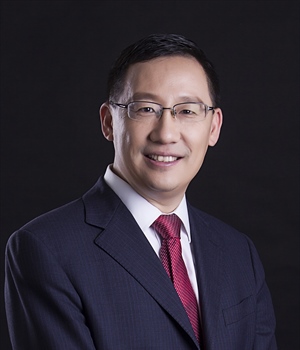BARCELONA — One of this weekend’s sleeper data presentations at Europe’s biggest oncology conference puts Pfizer in a leading position in a common cancer condition with no approved treatments in the US or Europe.
The New York-based pharma giant’s GDF-15-directed monoclonal antibody helped cancer patients gain weight and, at the highest dose, experience improvements in appetite, physical activity and muscle mass in a Phase 2 trial, according to data presented at the European Society for Medical Oncology confab on Saturday.
Analysts at Leerink Partners think the experimental medicine, code-named ponsegromab, has blockbuster potential.
But the large pharma has many questions to work through before it can mount a registrational study next year for ponsegromab in cancer cachexia, a muscle-wasting condition that leads to severe weight loss and impacts a patient’s ability to tolerate cancer medications. Patients with cachexia also require more healthcare resources, leading to a “high clinical and economic burden,” according to another Pfizer-funded study presented at ESMO.
 Min Li
Min LiDoctors have long sought a treatment for the metabolic condition, which some research suggests may be linked to up to 30% of cancer deaths. It’s also a strain on patients with chronic conditions like heart failure and chronic obstructive pulmonary disease, among others. The broad potential gives ponsegromab a shot at achieving sales of $1 billion or more, Leerink Partners analyst David Risinger wrote in a Sunday evening note.
Despite its prevalence, though, the condition has not received “the attention it deserves,” Min Li, a professor and co-leader of the cancer biology program at the Stephenson Cancer Center in Oklahoma, said in an email.
“We are now more confident in saying that we can see the light at the end of the tunnel,” Li said in the days after the ESMO presentation and simultaneous publication of the Phase 2 data in the New England Journal of Medicine.
Having one of the world’s biggest pharma companies with ample R&D resources to approach late-stage testing could be a boon for the field.
 Andy Judge
Andy Judge“Incredible progress is finally being made in this space, and we very much hope that Pfizer’s findings continue to be positive and pave the way for more successful trials to follow,” Andy Judge, a University of Florida professor and president of the Cancer Cachexia Society, told Endpoints in an email.
The big test
Cachexia comes with a lot of complexities, likely leading to a challenging Phase 3 showdown for Pfizer. The company anticipates launching the trial next year and it still needs to hash out plans with regulators, according to a spokesperson, who said Pfizer will share more Phase 3 details at a later date.
The condition is quite heterogeneous and impacts different cancers at varying rates, which could make it difficult to prove a treatment works in late-stage trials.
Li noted that “there is no consensus on the optimal endpoint to evaluate cancer cachexia.”
Another biotech, NGM Bio, warned in recent years of the lack of a clear regulatory path for cachexia. Another company received approval in Japan in 2020 for the medicine anamorelin, but the ghrelin receptor agonist was rejected in Europe a few years before.
Also standing in the way is the number of organs and tissues involved in the systemic dysfunction. Going after a single pathway “has yielded limited efficacy,” Li said.
Pfizer’s ponsegromab goes after growth differentiation factor 15, or GDF-15. The company’s researchers have said neutralizing GDF-15 could lead to improvements in caloric intake and boost physical activity. The candidate was discovered in-house and first entered the clinic in a 2018 healthy volunteer trial.
Ponsegromab is also being tested in patients with heart failure. That study is enrolling patients with cardiac cachexia or fatigue in its main cohort and is expected to be completed next March, according to the federal trials database.
Li noted other potential pathways in cancer cachexia could be targeted, such as “myostatin/activin signaling, IL-6, ghrelin, circular RNAs, metabolic enzymes, TNF and TGF.”
 Michael Rosenthal
Michael RosenthalMeanwhile, more studies are needed to “directly prove” that stabilizing muscle and fat reserves, “or even revers[ing] those losses,” has a direct impact on patient outcomes, Michael Rosenthal, assistant director of radiology at Dana-Farber/Brigham and Women’s Hospital, said in an email.
Aside from the effects on weight, doctors will look for impacts on daily activities. “It would be impressive to see improvement in ECOG performance status and overall survival in a randomized trial of chemotherapy with or without ponsegromab,” Vincent Chung, a medical oncologist at City of Hope, said in an email. ECOG is a scale that assesses a patient’s ability to function, including walking and self-care activities.
Few biotechs in the field
Pfizer is in the lead in cachexia drug development, and it’s no stranger to breaking open fields, having done so in areas like ATTR-CM, where it could soon face competition.
Other drugmakers looking at cachexia include UK-based Actimed Therapeutics, Tokyo-based TMS and Vistagen, which says on its website that it is “evaluating the path forward” for its candidate for more Phase 2 development.
 David Hui
David HuiEven if those medicines make it to market, it’s still important to think about treating cachexia in a “multi-dimensional way, rather than a single drug,” David Hui, director of supportive and palliative care research at the University of Texas MD Anderson Cancer Center, said in an interview on the sidelines of ESMO.
Doctors currently work with a team of healthcare professionals to address cachexia with diet and exercise and medications to treat symptoms of pain, difficulty swallowing and other complications, he said.
“Having the dietitian, physical therapy and supportive palliative care team working side by side together with the patient and family can, hopefully, lead to improved outcomes because everyone may have different concerns related to cachexia,” Hui said.